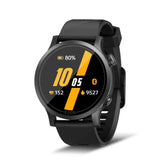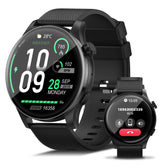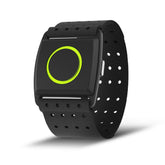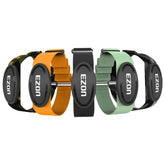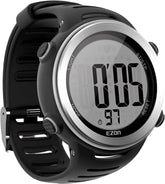Advanced Display and Health Monitoring: MIP Screens and Heart Rate on the Go
The fusion of rugged display technology and precise health tracking has redefined what athletes expect from their gear. MIP display sports watches and heart rate monitor watches now dominate the market, offering unmatched visibility in harsh conditions while delivering medical-grade biometric insights. Whether you’re scaling mountains or pushing through interval training, these innovations ensure you stay informed and in control. Let’s unpack how these technologies work and why they’re essential for modern adventurers.
MIP Displays: Clarity Meets Endurance
MIP (Memory-in-Pixel) screens are engineered for outdoor enthusiasts who demand readability under direct sunlight and minimal power consumption. Unlike AMOLED panels that drain batteries with constant refresh rates, MIP displays retain static images without power, ideal for always-on data fields like pace or elevation.
Key advantages of MIP display sports watches:
Sunlight Readability: Reflective layers amplify ambient light, eliminating glare—perfect for desert hikes or alpine skiing.
Battery Efficiency: Devices like the Garmin Instinct 2X Solar last up to 90 days in smartwatch mode, thanks to MIP’s low-energy design.
Durability: Scratch-resistant coatings (e.g., Corning Gorilla Glass DX) protect against trail debris and accidental impacts.
Recent studies highlight advancements in display materials, such as optimizing liquid crystal alignment to reduce ghosting during rapid motion—a critical upgrade for runners and cyclists.
Heart Rate Monitoring: Beyond Basic Metrics
Modern heart rate monitor watches leverage multi-sensor arrays and AI to track cardiovascular performance with clinical precision. Unlike early optical sensors prone to cadence lock, today’s systems combine:
LED Arrays: Green LEDs for surface-level blood flow, red/infrared for deeper tissue perfusion.
Algorithmic Filtering: Motion artifact cancellation (e.g., Garmin’s Elevate V5) isolates heart rate even during high-intensity sprints.
Stress and Recovery Insights: Derived from HRV (Heart Rate Variability), these metrics flag overtraining or illness risks.
Research like Real-Time Monitoring of User Stress, Heart Rate, and Heart Rate Variability on Mobile Devices (2022) demonstrates how photoplethysmography (PPG) via wearable sensors can detect arrhythmias and stress levels, mirroring hospital-grade ECG accuracy.
Synergy in Action: MIP + Heart Rate Tech
The marriage of MIP displays and advanced heart rate tracking creates a seamless experience for athletes:
Scenario 1: Ultramarathon Training
A runner checks their MIP display sports watch mid-race under blazing sun. The screen shows real-time heart rate zones (Zone 4: Threshold) alongside elevation gain. If their HR exceeds safe thresholds, the watch vibrates, prompting a pace adjustment to avoid burnout.
Scenario 2: Winter Mountaineering
At -15°C, a climber’s heart rate monitor watch uses thermal compensation to maintain sensor contact despite cold-induced vasoconstriction. The MIP screen remains crisp, displaying SpO₂ levels to prevent altitude sickness.
Scenario 3: Triathlon Transitions
During a swim-to-bike transition, the watch auto-switches to cycling mode. The MIP display shows power output and HR, while the optical sensor adjusts for water-induced signal noise.
Top 2025 Watches Combining MIP and HR Excellence
-
Garmin Enduro 3
-
MIP Solar Touchscreen: Unlimited battery life in sunlight.
-
Pulse Ox + HRV Tracking: Detects altitude acclimation and sleep apnea risks.
-
UltraTrac Mode: Extends GPS to 150 hours for multi-day expeditions.
-
-
Coros Vertix 3
-
Dual-Layer MIP: Customizable data fields for climbing gradients.
-
EvoLab Recovery Pro: Combines HRV, sleep, and workout strain for daily readiness scores.
-
-
Suunto Race
-
MIL-STD-810H MIP Display: Survives submersion and extreme temps.
-
Blood Flow Insights: Tracks muscle oxygenation (SmO₂) during HIIT sessions.
-
Future Trends: Smarter, Lighter, More Integrated
AI-Powered Alerts: Watches like the Polar Grit X3 Pro will predict cardiac anomalies 30 minutes pre-episode using PPG and historical HRV.
Hybrid MIP-AMOLED: Context-aware screens (e.g., MIP outdoors, AMOLED indoors) to balance visibility and color depth.
Non-Invasive Biomarkers: Glucose and lactate monitoring via sweat analysis.
Why This Combo Wins
For adventurers, a MIP display sports watch isn’t just about surviving the elements—it’s about thriving in them. Paired with a heart rate monitor watch that doubles as a health sentinel, these devices empower data-driven decisions without compromising on endurance. As battery tech and sensor fusion advance, expect your wrist to become the ultimate command center for both performance and longevity.
